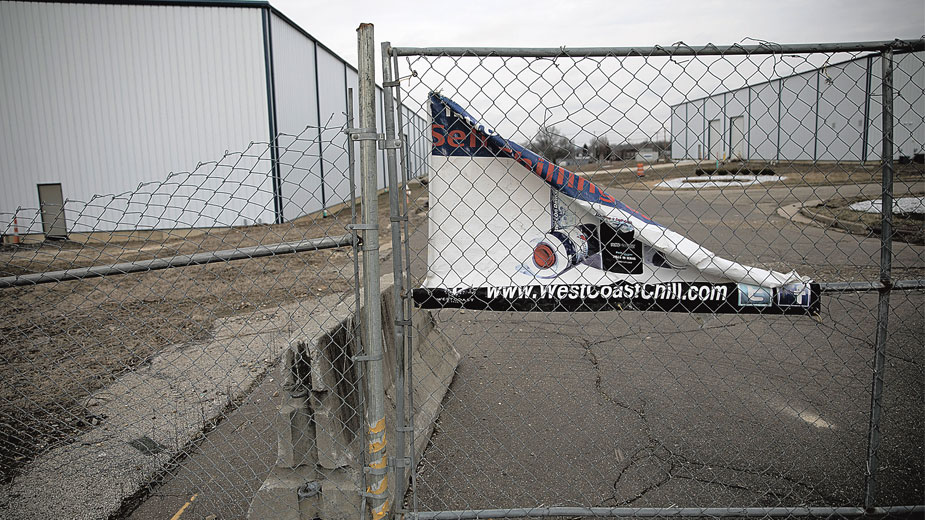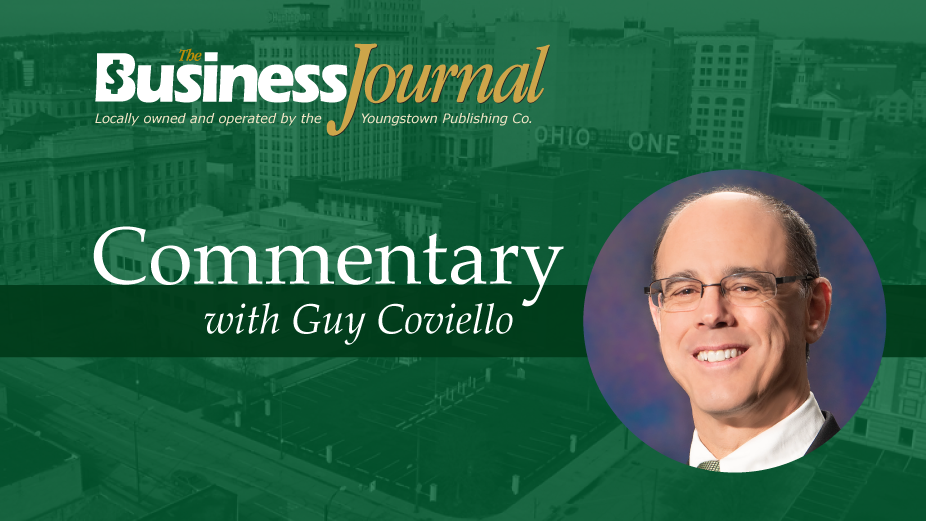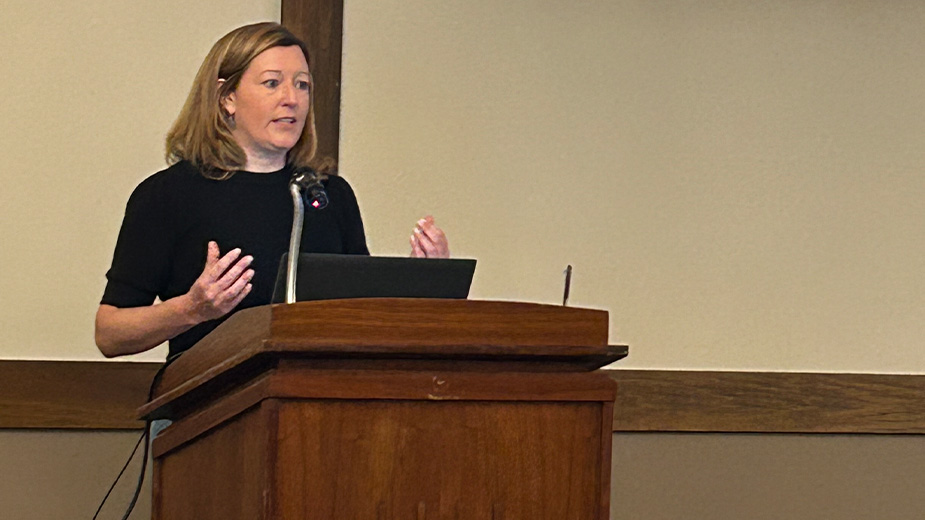Millions in Tax Breaks. So Where Are the Jobs?
Investigative series begins with focus on enterprise zones.
This article was produced in partnership with the ProPublica Local Reporting Network. Sign up for ProPublica’s Big Story newsletter to get stories like this one as soon as they are published.
YOUNGSTOWN, Ohio — On an unseasonably warm November morning in 2016, Youngstown’s business and political leaders crowded onto a small, scraggly plot of land on the city’s long-suffering East Side. Reeling from decades of decline, the area was a patchwork of potholed streets, weeded lots, moldering homes and drive-thru liquor marts.
But on this day, the city, once a national center of steel manufacturing and now a poster child for industrial decay, was celebrating the groundbreaking of a new venture: Chill-Can, the world’s first self-chilling beverage can. Joseph Co. International, a California-based beverage company, had pledged to build a $20 million research and manufacturing campus and create hundreds of new jobs. Its motto: “The Ice Age Is Over!”
Dressed in a dark suit and pink tie, Mitchell Joseph, the firm’s chairman and CEO, beamed as he addressed more than 100 friends, family members and city officials. His great-grandfather, he said, had founded the Star Bottling Co. on the site at the turn of the 20th century, before it closed shop in 1971.
“It’s sacred ground to us,” Joseph said. “To be able to come back after almost 100 years on the same exact property and take technology that is revolutionary in the beverage industry and bring it back to Youngstown is very gratifying to us.”
Then-Mayor John McNally and Youngstown State University President Jim Tressel applauded as Joseph drove a shovel into a patch of turf along Lane Avenue and officially kick-started a project that officials said would manufacture 1 billion cans a year. “We’ll service everything up to Boston, down to Florida, out to Dallas,” Joseph proclaimed.
For Youngstown, it was a potential lifeline. The city’s unemployment rate hovered around 8% – higher than the national average. More than a third of residents lived below the poverty line. Chill-Can represented the first major investment in the city in six years.
So officials did what they had done many times before. Despite a tight budget and declining tax dollars, the city gave Joseph a $1.5 million grant to help develop the site, one of the largest awards of its kind in city history. Stretched for resources, officials took part of the money from Youngstown’s water and wastewater funds, which had been earmarked for sewer and water projects. They also approved massive tax breaks for the property. And they spent an additional $360,000 to purchase and demolish the homes of roughly a dozen residents who lived within the footprint of the future Chill-Can plant.
“It’s not often, in a city of any size, where you’re able to help break ground on a project that’s going to bring anywhere from 240 to 250 jobs to a city,” McNally said at the ceremony.
More than three years later, Youngstown is still waiting. A pair of metal buildings resembling airplane hangars sit empty on the site. Piles of stacked framing, covered in protective plastic, rest on an abandoned road that bisects the area. Out front, three flagpoles stand sentinel, one flying the flag of the United States. A terra cotta sign with a black-tile backing and gilded lettering displays the Joseph Co.’s name. A smaller sign on the opposite corner simply reads “Chill-Can.”
Not one job has been created, according to the company’s most recent report to the city.
For Youngstown, the deal was just the latest in a long line of fizzled developments, underscoring how officials have gambled with economic development dollars in hopes of reviving the city. Between 1991 and 2017, the city awarded millions of dollars in property tax breaks to 94 projects that pledged new jobs, according to data provided by the city. Yet half of those projects failed to deliver on their promises, an investigation by The Business Journal and ProPublica has found. One in four projects reported zero net job creation.
“To have 50% falling short and half of those with goose eggs in the jobs column – that’s worse than average, for sure,” said Greg LeRoy, executive director of Good Jobs First, a national nonprofit that advocates for accountability in economic development. The noncompliance rate for similar projects across the country is around 30%, he said.

Under these so-called enterprise zone agreements, delinquent companies can face penalties, including repayment of taxes and the termination of incentives. But in Youngstown, they rarely do. Officials have canceled 25 agreements over the past three decades, usually the result of the business closing, relocating or failing to move forward with a project. Records indicate that the city sought back taxes from an errant firm on just one occasion, although it’s unclear if authorities ever collected; city officials did not respond to questions on the matter. As a result, dozens of private businesses have profited from public subsidies in a city that can scarcely afford them.
Among the offenders are Enviva Materials, a tire recycling operation; Industrial Waste Control, a pressure-washing and waste handling business; and Domestic Linen Co., a uniform laundry and rental operation. All received 10-year tax abatements without creating a single new job or substantially missing their employment targets.
Some firms, like Allied Consolidated Industries Inc., a steel erecting and dismantling company, received back-to-back incentive packages, even after reneging on their initial agreement. Others, like InfoCision Management Corp., an Akron, Ohio-based call center, left town halfway through their contract – after receiving free rent in a city-owned building.
For its part, the Joseph Co. says it’s still dedicated to opening its Chill-Can campus in Youngstown. Infrastructure problems, such as aging utility lines, have delayed the project, owner Joseph said.
City officials defended their track record, citing industry or economic conditions that may have undercut companies’ hiring goals. “We don’t have a crystal ball to know if they’re all going to work,” said Sharon Woodberry, the city’s economic development director. “We have had some challenging times, and we have to try to encourage investment. You just can’t sit still and do nothing.”
While some firms failed to deliver, officials acknowledge, Youngstown’s program has ultimately leveraged private investments of more than $755 million and has helped create a total of 2,493 jobs out of a promised 2,861, according to city records. Still, The Business Journal and ProPublica found that more than half of those jobs were created by just five companies, including a Toys R Us distribution center and Exal Corp., which manufactures aluminum cans and bottles. Exal has since reduced its workforce, while the Toys R Us warehouse closed. (That facility is now occupied by HMS Manufacturing, which employs far fewer workers than the toyseller did at its peak).
Now, Youngstown’s approach to economic development is coming under greater scrutiny as the city’s former finance director and a prominent developer prepare to face trial on public corruption charges. At the heart of the case are allegations that officials steered taxpayer funds to favored projects in exchange for bribes. The defendants have pleaded not guilty. Separately, the state auditor has alleged that officials misappropriated money from the city’s water and wastewater funds and used it to spur a number of development deals, including Chill-Can. The city is now fighting a directive from that office to repay millions of dollars, arguing, in part, that such a move would plunge Youngstown into fiscal peril.
First Ward Councilman Julius Oliver, who represents a portion of the East Side neighborhood where Chill-Can is located, describes Youngstown’s incentives system as “broken” and has pushed for more accountability against companies that have not met their promised job goals.
“We have people within our city government that could be doing more, and quite frankly, they’re not,” Oliver said. “You can’t keep using the same excuse over and over again.”
Economic Development, the Youngstown Way
During the first half of the 20th century, Youngstown was a manufacturing powerhouse. The Youngstown Sheet & Tube Co., Republic Steel Corp. and U.S. Steel Corp. established massive factories along a meandering, 22-mile stretch of the Mahoning River and directly employed more than 30,000 workers.
But by the late 1970s, the companies were facing global competition. Hampered by antiquated equipment and high labor costs, they shut down one by one. Within five years, 50,000 people lost their jobs, and, within a decade, Youngstown, a city of 115,000, had shed nearly a fifth of its population. Unemployment spiked to more than 20%. (Today, about 65,000 people call the city home.)
Like other struggling cities across the industrial Midwest, Youngstown responded with a plan to retool its economy through financial incentives. Officials offered businesses free land, tax abatements, development grants, low-interest loans and other inducements if they would set up shop in the city.
The efforts relied heavily on the state of Ohio’s enterprise zone program, which allows distressed communities to offer property tax breaks, usually over 10 years. In exchange, a company agrees to create a specific number of jobs and invest a certain amount of money into the business. Once the 10-year term expires, the business begins to pay its full tax liability. These tax abatements represent the single largest source of financial incentives in the city’s arsenal. The city, however, could not say how much was forgiven under the program. In response to public records requests, Youngstown provided cost projections for just 30 of the 94 agreements it granted since 1991, saying it could not locate many of the early contracts. For the deals with documentation, officials estimated awarding $15.3 million in tax breaks.
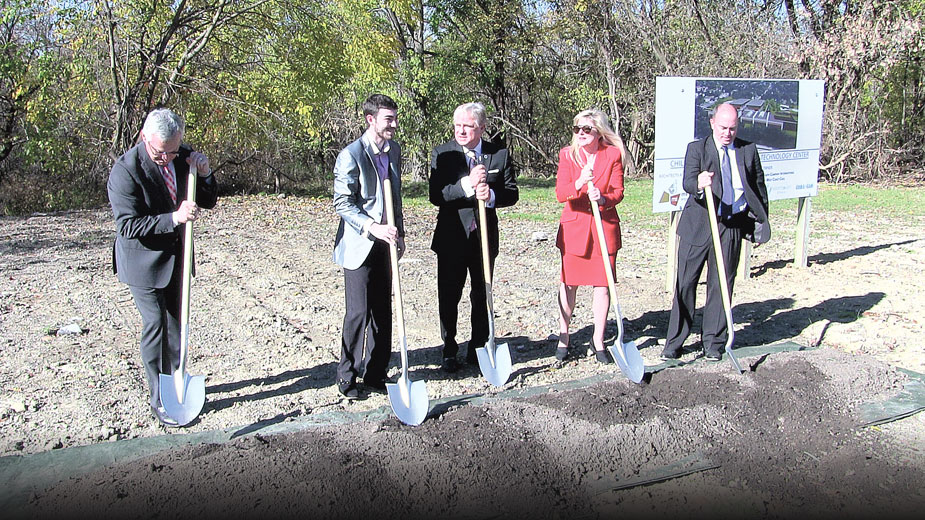
Lock P. Beachum Sr., who served on the City Council between 1985 and 1995, says he was an initial proponent of the enterprise zone program during the 1980s. But today, he says the incentives have failed to change the city’s economic fortunes. “We were sold on the impact they would bring,” he said. “We would fall for it.”
At the same time, the Youngstown area faced a leadership crisis. The city made national headlines in the 1990s for a rolling series of public corruption investigations, resulting in more than 70 indictments and convictions. The felons ranged from the local sheriff to the region’s infamous U.S. congressman, the late James Traficant, who was convicted of bribery and racketeering for forcing office employees to kick back a portion of their salaries to him, and having congressional aides perform work on his farm and houseboat. “The fact that the only obvious growth industry is in special federal task force indictments,” The New York Times reported in April 2000, “underlines Youngstown’s failure to share in the suburban economic boom, which leaves it encircled like some ossified European city-state caught in a time warp.”
LeRoy, the incentives expert, said distressed communities often believe that there is no alternative besides generous incentives to attract new business. “When community leaders get told you’re not competitive, there’s the idea that we need huge subsidies to make this work,” he said. “It sets up the community to be more vulnerable. It creates a civic inferiority complex.”
Iryna Lendel, a research analyst at Cleveland State University, said Youngstown faced steeper challenges than other Ohio communities because of its dependence on manufacturing. Suppliers, vendors and workers were all geared toward supporting auto and steel producers, and when those industries withered, so too did the jobs. As a recent YSU study put it, the city’s workforce is now “older, less educated, less skilled and poorer than most comparable cities in the state, region and nation.” That has left it particularly vulnerable in economic downturns. Indeed, the metro region has yet to recover from the Great Recession, while areas such as Akron, Cleveland and Canton continued to add jobs through 2019. Local leaders are now fearful that the coronavirus outbreak could further cripple the city’s prospects. According to state data, Youngstown had 8% unemployment in March – one of the highest rates in Ohio.
Officials have steadily defended their use of tax breaks.
“It made economic sense to do it,” said David Bozanich, the former city finance director who was one of the major architects behind the city’s economic development programs and now faces public corruption charges for his administration of taxpayer funds. (He has pleaded not guilty.) “It’s not because we wanted to just give stuff away. You needed to attract the investment.”
To be sure, Youngstown’s enterprise zone program has attracted dozens of businesses that have honored their job commitments and boosted the local economy. Those new employees, in turn, mean more income tax for city coffers, officials said. But half the program’s roster is rife with companies that failed to create the promised slots and reaped benefits from tax breaks anyway.
Even when businesses do fulfill their pledges, there are no requirements for them to hire city residents; enterprise zone agreements simply urge companies to give it their “best efforts” to do so. Firms have a poor track record. According to a city report, in 2018, 1,046 employees worked at businesses receiving tax breaks; just about a fifth lived in Youngstown.
All active agreements are monitored by the city’s Tax Incentive Review Council, which is made up of City Council members, the Mahoning County auditor and a school board member. For decades, it met just once a year to make recommendations whether to continue or cancel incentives. “It seems as though it was a formality and not a serious attempt to hold these companies to the fire,” said Rev. Kenneth Simon, a former member of Youngstown’s Human Relations Commission, which advises the review council. In 2018, the council started meeting quarterly to step up monitoring. During its most recent meeting in December, members voted to continue all 20 active enterprise zone agreements, including five with firms failing to meet their job targets.
Bozanich said it didn’t make sense to penalize delinquent companies, especially given the region’s battered economy. “In most cases,” Bozanich told The Business Journal, “people were just trying to survive.”
All of this has taken a financial toll on Youngstown, especially its struggling public schools, which receive about a fifth of their funding from property taxes. Faced with a dwindling population and an eroding tax base, the district plunged into a fiscal crisis in the late 1990s, slashing 200 jobs, closing six schools and cutting various expenses. Voters later supported millions of dollars in new property taxes to stabilize the schools, but today the district is under state control, and the schools are rated some of the worst in Ohio.
“They have not worked – we have to pay the price,” said Jacqueline Adair, a member of the Youngstown school board and longtime critic of the enterprise zone program. According to the state auditor’s most recent report, the district lost $248,531 to the tax break program during the fiscal year that ended in June 2018.
The Chill-Can Cometh
In the fall of 2015, Youngstown was in the midst of its latest attempt at reinvention.
“Now you can build it better, faster, easier in Youngstown,” announced an economic development study from Youngstown State University. Researchers touted the city’s low cost of living, easy access to major highways, land and building availability, and growth potential in the arts, health care, advanced manufacturing and food sectors.
Initiatives such as the Youngstown Business Incubator, a hub for tech startups, and America Makes, the first of the Obama administration’s national advanced manufacturing centers, had positioned Youngstown as a “Maker City,” the report said. “The future of Youngstown,” researchers wrote, “must not be defined by its past.”
In Chill-Can, YSU President Tressel saw the future. Months earlier, he had met with Joseph, the company’s owner, a Youngstown native, YSU alum and longtime friend. Joseph told Tressel about his plans to open a Chill-Can plant in Columbus. Tressel asked him to consider Youngstown instead.
Within the beverage industry, the idea of a self-chilling can has long been viewed with suspicion. Firms have tried and failed to develop a viable model for decades. Safety and cost were key issues. In the 1960s, one such can caused frostbite upon being touched. Later, other prototypes emitted gas. In the 1980s, a company named Laser Arms sold about $2.1 million in stock, promising investors a revolutionary self-chilling can. It was a scam: The firm’s owner had paid actors to pose as executives. He later pleaded guilty to racketeering charges.
“Whenever you mention self-cooling cans, people’s eyes raise to the ceiling and they say, ‘Oh Lord, not again,’” John Nutting, editorial director of Sayers Publishing Group Ltd., which publishes Canmaker magazine, told The Wall Street Journal in 2000. At the time, another firm, Tempra, was touting a vacuum device that sucked heat from the can and chilled the beverage.
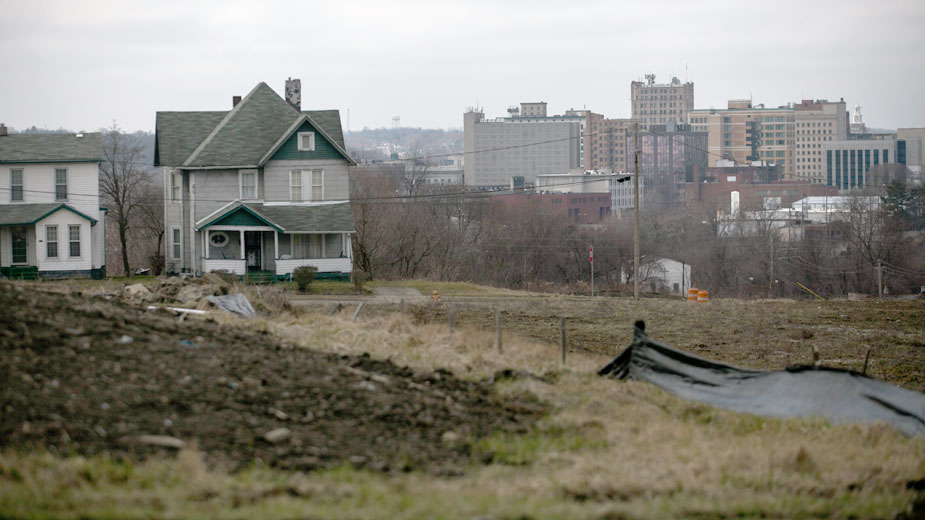
Two decades later, the company says it’s still trying to crack the commercial market. CEO Barney Guarino told The Business Journal that beverage companies are reluctant to take a risk on the costly technology.
Still, Guarino said he believes there is a market for the self-chilling can, even at a premium price.
Industry experts aren’t so sure. “It’s very niche,” said Nutting, who is now a consultant. “It’s interesting technology, but that’s about as far as it goes. I’m skeptical about the whole thing.”
Joseph vowed to be different. He first came across the concept in the late 1980s, when California Polytechnic State University asked him to help design a self-chilling can as part of a research initiative. The project never got off the ground, but Joseph was so intrigued that he pursued the idea himself. By the late 1990s, he had invested millions of dollars to secure patents related to self-chilling technology, and he began winning praise for his own innovation. In fact, his first cooling device was named “Can of the Year” at the International Canning Technology Exhibition in 1997. But there were hiccups. Commercial partners pulled out when environmental groups revealed that the cooling technology involved the use of greenhouse gasses.
The Joseph Co. kept trying. By 2012, the company’s engineers had designed new, environmentally safe chilling technology: A consumer twists a knob at the bottom of a can and activates a cooling apparatus. In about 90 seconds, the beverage temperature drops about 30 degrees. Two years later, Joseph rolled out the new cans in California, where his firm is based, and in Lake Havasu City, Arizona, a popular college spring break destination. “They couldn’t keep them on the shelf,” Joseph later told YSU Magazine. He started to envision a campus where his engineers could develop his cans and self-chilling technology for other industries.
Tressel encouraged Joseph to talk to city leaders.
By 2015, however, the city’s declining tax base meant it had limited resources in the general fund to support economic development projects. So, when Joseph sought incentives, officials considered taking the money from the city’s water and wastewater departments. In recent years, they’d handed out more than $2.5 million in loans and grants from the funds to private developers. Much of that went toward converting historic buildings downtown into offices and apartments.
To convince Youngstown of its viability, The Joseph Co. provided a list of bottling contracts with companies like Heineken and sales agreements with the Cleveland Cavaliers, the Florida Panthers hockey team and YSU (the company’s West Coast Chill was the college’s official energy drink), along with projected revenue forecasts. It also produced profit and loss statements from its California plant and another subsidiary in England, all demonstrating healthy business operations.
City officials were not fully convinced. As talks dragged on through 2016, Joseph and his attorney, Brian Duncan, grew irritated. They said they wanted the plant up and running in a year. “Any additional delay can and/or will force the developer to relocate the project to South Florida,” Duncan wrote to the city’s outside lawyer that August.
Two weeks later, Joseph himself weighed in, after discovering that the attorney had vacationed in Southern California but did not stop by the company’s Irvine headquarters.
“Only imagine the anger that will emanate from the people of Youngstown when they learn that this vital (and easy!) due diligence step was skipped,” Joseph wrote to his lawyer, who forwarded the email to the city.
Days later, on Labor Day weekend, Mayor McNally visited Joseph in California and received a demonstration of how the Chill-Can works. (He said he had already planned a trip out West.) The mayor turned the bottom of the can, he said, and was “pleasantly surprised” when it cooled within 90 seconds. That fall, the City Council’s economic development committee met to consider a $1.5 million grant for Chill-Can, cobbled together from water and wastewater funds.
“Obviously, this is a project we’re very excited about,” Woodberry, the city’s economic development director, told council members. “It wasn’t an easy deal.”
Bozanich, then the city finance director, said the Joseph Co. provided the city with “the guarantees we were looking for”: a bond in excess of $1 million assuring completion of the construction work and an additional $250,000 in an escrow account that the city could draw on should the company fail to move forward with the project.
The council vote was unanimous.
Officials later inked a deal for even more incentives: a 75% break on property taxes over 10 years, in exchange for Joseph’s promise to hire at least 237 employees by August 2021.
Some school board members were outraged.
During a board meeting in December 2016, board member Adair said the proposal was nothing short of “corporate welfare.” Board member Dario Hunter agreed, adding that he would not support a deal that “takes away dollars from the children.” The board, however, had little power to stop it. Under Ohio law, enterprise zone agreements that include tax abatements of 75% or less do not require school board approval. Officials must simply give the board advance notice before the measure goes before the City Council.
The board approved the measure by a 3-2 vote, acknowledging that the city had the final say.
But Chill-Can still couldn’t launch without something else: land.
Knock, Knock: It’s the Chill-Can
Rose Ann Brown got the letter in the mail.
It was mid-2016, and the elderly widow and former hair stylist couldn’t believe what she was reading: the city wanted to purchase properties in the neighborhood. The sudden interest made little sense to Brown; she had lived on the East Side for 70 years, watching it crumble from vibrant to nearly abandoned. In fact, in recent years, Youngstown had designated large parts of the area “not viable” as it tried to shrink the footprint of the city and reduce services. About a dozen families remained.
But officials and Joseph had new plans. Brown’s home was now part of something called the Near Eastside Neighborhood Renewal Area. As dubious as the Chill-Can proposal was to some, it represented an opening to redevelop the East Side into an industrial zone. Just 500 feet from a highway on-ramp, the neighborhood had been identified by city planners years earlier as an ideal place for light industrial businesses. So as Joseph and the city were in negotiations, Youngstown spent $25,000 to commission a so-called blight study of the 21-acre area. The assessment, which found that 99% of parcels “constitute an economic or social liability,” empowered officials to use eminent domain to seize residents’ homes if necessary.
The city presented its vision to residents at a series of meetings. The discussions, however, were general. No one mentioned Chill-Can. That summer, about 40 people from the East Side crowded into a small room on the sixth floor of City Hall for a city planning commission meeting. On the agenda was whether to recommend rezoning the area.
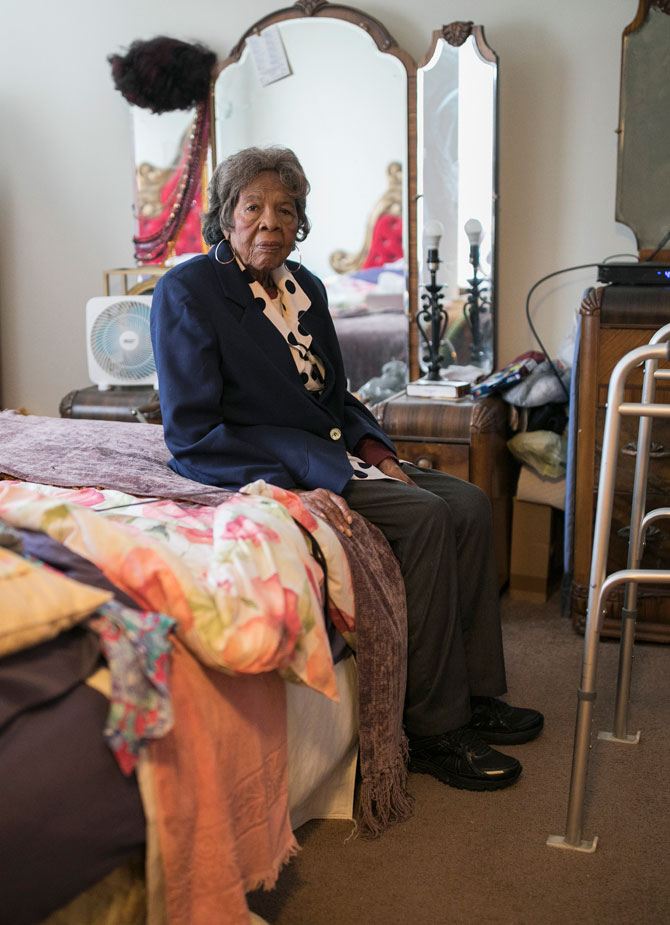
Some residents were angry. “You’re not giving me enough information,” said Pat Jackson, whose property was initially targeted. She wanted to know who would get the land. Martin Hume, then the city’s law director, said only that the rezoning measures were intended to attract “multiple different types of businesses.”
Internal records obtained by The Business Journal and ProPublica, however, suggest that the area was being redeveloped primarily for Joseph. A site plan from February shows three manufacturing and distribution facilities, a research and development building and a warehouse — a plan that mirrored the one ultimately submitted for Chill-Can. Without naming the Joseph Co., the document touted that the development could create nearly 200 jobs – the number that Joseph had been using in his talks with city officials.
The planning commission deadlocked, but later approved a revised plan.
That fall, the City Council voted unanimously to approve up to $375,000 to purchase land within the area.
Residents felt pressured to sell.
The city offered Brown $35,000 for her property – well above the assessed value of $2,500. “I was comfortable in my home, but I felt that I didn’t have a choice,” she said. “I just felt like they took my place.” The land is now cleared and vacant, and it makes up a portion of the Chill-Can site.
The city helped her secure a new place to live in a senior apartment complex on Youngstown’s North Side, where she pays $450 a month in rent. Having to relocate after 70 years in the same neighborhood stung. “I didn’t like the way they were pushing me out of my comfort zone,” said Brown, who is now 93. She estimates there’s enough left from the house sale to cover the next two years in her apartment, but she worries about what will happen after that. “I get nervous every month thinking they might go up on the rent,” she said.
In all, the city spent $360,800 from its general fund to acquire vacant and occupied properties, plus an additional $15,000 as a signing bonus to convince a lone holdout. Twelve homeowners ultimately sold their houses. City workers then demolished them. “The city tried to do the best it could to take care of these people in a fair and appropriate way,” former law director Hume said in an interview. Eminent domain, he noted, was exercised on just a handful of vacant, blighted parcels.
The Mahoning County Land Bank, a nonprofit agency that assumes control of vacant properties and returns them to productive use, helped acquire the rest of the site. In the end, Joseph personally purchased two lots for $6,000 and paid the land bank $55,760 for an additional 75 parcels. The city, however, sought some insurance: Joseph had to complete the foundations and framing of two buildings before October 2017 – or Youngstown had the option to reacquire the property.
Promises Broken
As construction took off, Youngstown’s business and civic leaders fawned over Chill-Can. In 2017, the Youngstown Warren Regional Chamber honored Joseph with its Business Professional of the Year award. YSU featured him on the cover of its alumni magazine.
“This is going to revolutionize the beverage industry,” he told the publication. “There will be no other facility like it in the world.” Joseph imagined a future where 1,000 people move in and out of the plant, producing a billion chill-cans a year. Hiring, he said, would begin toward the end of the year, followed by production in the summer of 2018.
Two buildings went up. But after the initial flurry of construction, the East Side site went dark. Weeds and tall grass clotted the site as deer and wild turkey roamed the grounds. The remaining residents wondered if the project would ever be finished. “I’ve seen no trucks, no equipment coming down here,” said Jose Rivera, who lives across the street. “There’s got to be some kind of accountability from somebody.”
As questions arose about the project’s future, Joseph took measures to reassure the city. In May of 2018, nearly 18 months after breaking ground, he delivered three test cans to WKBN-TV in Youngstown, where the station boasted of the “first demonstration” of the product. Following six sentences of detailed instructions on the side of the can, anchorman Stan Boney turned it upside down, twisted a cap and then waited while the can hissed.
“When it was done, it was cold,” Boney told his viewers. “But it was not ice cold.”
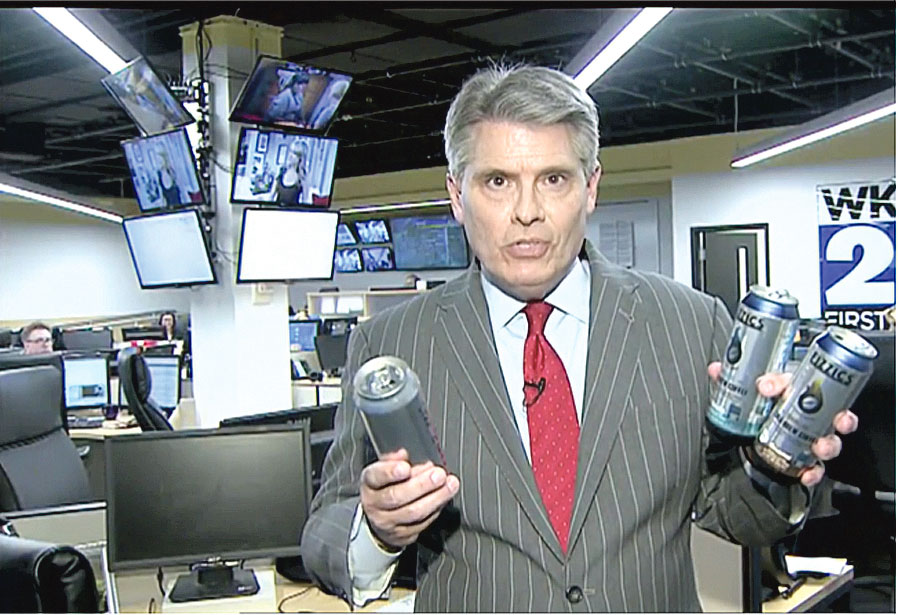
In an interview with the station, Joseph explained that the company had hit a few logistical obstacles. Researchers had to retool the design, he said, because the original device, which was activated by the push of a button, was “a little difficult, especially with ladies with long fingernails.” Also, contractors had run into problems with underground wiring and pipes at the site and delayed pouring concrete because of the region’s cold winters.
At the time, Joseph told The Business Journal that he had shifted his focus elsewhere: California, where his company partnered with 7-Eleven to launch a test run of its new Fizzics Sparkling Cold Brew Coffee, outfitted with Chill-Can technology at 15 Los Angeles-area stores. Retail price: $2.99 to $5.99 a can. (Emails to 7-Eleven’s corporate office seeking comment on the test run’s results were not answered.) “Youngstown will be the recipient of everything we’re doing,” he said.
Last fall, during a Cleveland Browns preseason game, the company aired an ad: A young woman opens and sips a Chill-Can. “So cold and convenient,” she says. The spot closes with a pledge: “Chill-Can Coming Soon. Youngstown, Ohio.”
Officials Are Still Waiting
I think there’s a lot of smoke he’s been handing us,” said Councilwoman Lauren McNally. “I’m not optimistic that it’s ever going to come to fruition.”
Oliver, the councilman who took office as the Chill-Can project was unfolding, said he toured one of the buildings in November. Locker rooms and offices were finished, he said, but pieces of equipment were stacked against a wall. “It’s not assembled,” he told The Business Journal. “He’s slowly making progress.”
Oliver said he understands how a project of this magnitude could experience setbacks, but he wants to see improvements soon. “You either have to do something or find another alternative,” he said.
Indeed, Chill-Can may be the last big bet that Youngstown can place – at least for a while. State prosecutors have charged prominent city officials with public corruption, alleging that Bozanich and former Mayor Charles Sammarone took bribes in exchange for steering taxpayer funds to favored economic development projects. Sammarone pleaded guilty to tampering with records and was sentenced to five years of probation and 30 days of community service. Bozanich has pleaded not guilty and is set to go to trial this summer.
“The abuses we’ve uncovered are maddening,” said then-state auditor Dave Yost when he announced the charges, “especially for an area of our state that has been challenged economically.”
During a pretrial hearing in late January, Youngstown’s economic development director, Sharon Woodberry, testified that the city’s economic development office lacked proper auditing controls to track how grant money was spent. Keith Faber, elected state auditor in November 2018, has since blasted the city for improperly tapping its water and wastewater money for economic development. His office has directed the city to repay $4.4 million – including the $1.5 million it spent on the Chill-Can project.
Youngstown’s current mayor, Jamael Tito Brown, has challenged the auditor’s findings, saying the city would not comply without a court order. Repaying the total amount could force Youngstown into a budget crisis, added Kyle Miasek, the city’s interim finance director. Meanwhile, the city is looking to shore up its water fund, which faces a deficit of $10.3 million over the next four years. Officials are floating raising residents’ water rates by $10 a month to cover the anticipated loss.
Former Mayor McNally maintains that legal opinions from the city’s former law director and outside counsel supported the city’s use of water and wastewater funds, which fueled millions of dollars in private investment, including a DoubleTree hotel downtown. “Without that money,” he said, “none of those projects get done.”
For his part, Joseph acknowledges that the Chill-Can campus became a far more complex project than he originally envisioned and admits he should have performed more due diligence at the site. Among the challenges were antiquated utility lines that needed replacement. “It was a nightmare,” he said in an interview. “I didn’t know all this.”
Joseph said he’s sunk more than $2 million into the project. But aside from the California test run, the Chill-Can has yet to see production. Joseph says the company is in the process of negotiating licensing deals with beverage companies, but he declined to provide details, citing nondisclosure agreements. Joseph previously said that the company had signed a deal with Anheuser-Busch, but in April the brewer’s parent company told The Business Journal the contract is limited to a “small project” with one of its Brazilian subsidiaries.
Nevertheless, Joseph took out a full-page ad last month in a local newspaper, reassuring Youngstown that Chill-Can was coming, despite the coronavirus pandemic. “Please know I am fully committed,” he wrote, “and look forward to the coming years of growth and prosperity.”
ProPublica reporter Agnel Philip contributed to this story.
Pictured at top: Two buildings constructed in 2017 have yet to begin production of the patented Chill-Can. Photo: Maddie McGarvey for ProPublica.
The Business Journal in Youngstown, Ohio and ProPublica are investigating the effectiveness of economic development incentives deployed in the Mahoning Valley following the exodus of the steel industry. If you know something about how incentives were misused or how they were effectively used elsewhere, how and why, we would like to hear from you. We’d particularly like to hear from:
- Past or present employees of companies who received development incentives.
- Government and economic development officials responding to our findings, providing additional information and insights on how incentives can be better deployed and monitored for compliance moving forward.
- Business leaders with suggestions on the types of incentives that small businesses need.
If you have something to share with us, here’s how to do it:
- Via email: [email protected]
- Via phone call, text. 330 333 7774
- Via our online form: BusinessJournalDaily.com/submit-your-story/
Copyright 2024 The Business Journal, Youngstown, Ohio.
